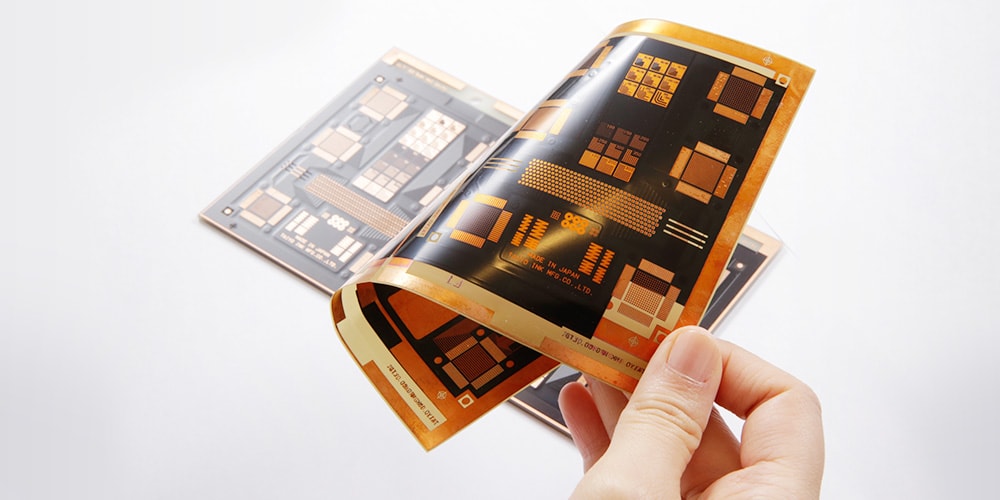Cutting-edge patented tech overcame hurdles
Even in making the simple change in color from the usual green to black, there were several issues to be overcome.
The first issue was "color and light compatibility." A photographic development technique called "photolithography" is used in circuit patterns using photoimageable SR. The SR is made into an insulator film by applying a photosensitizing agent (SR) to the substrate, which is then partially exposed to ultraviolet light, while the remaining unexposed areas are developed. A green SR is unproblematic, but black absorbs light, which makes it difficult to attain the solidity required for the special characteristics of SR because the ultraviolet light does not pass all the way through. A further problem is that "you cannot expose the material to regular light when the surrounding air contains oxygen." Exposure in an oxygen-free vacuum can be enabled using negative film and a conventional contact exposure machine, but the customer’s requirements for this project included the mass-production of elaborate patterns with accuracy in an atmosphere containing oxygen by means of digital exposure processing.
After a lengthy process of trial and error, we felt we had the answer when we completed a material that had been hardened under a small amount of light. We were able to reduce the 1,000 mJ/cm2 of light quantity commonly used to produce conventional black SR down to 100 mJ/cm2, which delighted the client. It was thought that there would be a great need in the future for the production of such a high-performance material that does not use a black coloring agent, so we worked together with materials manufacturers in order to develop this technology as quickly as possible. Another reason for our success is that the technical know-how acquired in the development of black SR has been patented and we are the only ones in the world who can produce high-quality black SR.







